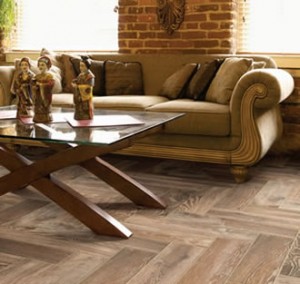 Over the past few years, the demand for wood like large plank tiles have certainly grown. In large cities like Sydney, people are often seeing installing these large wood-like tiles on their floors for a more elegant look. However, even though the fair majority of people are perfectly happy with their tiles some people have been complaining of various problems post installation. These problems in most cases have absolutely nothing to do with the tiles themselves but rather in the way they have been laid out or the space where they have been put in. Then there is also the fact that since these tiles are comparatively new there are few people who are experts at installing them correctly.
Over the past few years, the demand for wood like large plank tiles have certainly grown. In large cities like Sydney, people are often seeing installing these large wood-like tiles on their floors for a more elegant look. However, even though the fair majority of people are perfectly happy with their tiles some people have been complaining of various problems post installation. These problems in most cases have absolutely nothing to do with the tiles themselves but rather in the way they have been laid out or the space where they have been put in. Then there is also the fact that since these tiles are comparatively new there are few people who are experts at installing them correctly.
There are quite a few frustrating things about porcelain wood tiles as well as other large format tiles in general which most tile contractors often keep to themselves, in addition to salespeople at tile stores. These frustrations can end up leading you to spending more money and time both of which you can avoid if you know about them in advance. Below we look at what you need to look out for when using these types of tiles in your home.
1. They are certainly not flat
You would think that tiles in general need to be flat but large format tiles are not even though at first glance they may look flat. However, if you look closely you’ll see a bit of curvature. Their center is often high which in other words means there is a crown right in the middle. There are some brands that are worse than others. This will become a problem when you overlap them which lead to the next issue which we discuss below.
2. Avoid a full offset when using a wood plank tile
Many tile specialists in Sydney recommend that people refrain from using a full offset, a 50% offset is when the middle of your tile is directly in line with the floor’s grout joint of the other row which works out better for these tiles. This helps to maximize the overall unevenness or the lippage as it is called in the profession between both these tiles. However, unless the tiles you buy say otherwise the American National Standards Specifications for the installation of all Ceramic Tiles suggests that there needs to be a 33% maximum offset. This reference can be found at ANSI A108.02 Section 4.3.8. In layman terms it means that on a 24 inch long strip of tile the max you can get is an 8″ inch offset.
3. Your floor will need to be exceptionally flat
Floors which are not perfectly flat or have even a slight imperfection will further accentuate the problem with the above discussed crown of these large format tiles. For any tile which is 15 inches longer the maximum variation allowed with your floor is 10ft. But unfortunately floors are no longer perfectly flat anymore. So, steps will need to be taken to completely flatten them.
4. The right thinset needs to be used
When you are installing large format tiles you will always want to use medium bed mortar and also the right trowel. Marble and Granite mix from various custom building products are very reliable and available. Using these types of mortars even a 1/2″ x1/2″ notch trowel is the smallest you’ll want to try. Keep in mind that these types of mortars are a lot more expensive but you shouldn’t skim on these especially if you are serious about large format tiles. If you need plank floors then use medium bed tile adhesive.
Even though leading large format porcelain tile sellers like Sydney based Tile Market does not recommend people who are on a budget install these tiles they are still undoubtedly beautiful. Some of the biggest problems can easily be avoided by knowing what causes them and taking the right steps to fix them in advance. The upside to these tiles and especially wood tiles is that they last much longer than their traditional wood counterparts which they are going to replace.
Author Bio
Mark has been in the tile industry for over fifteen years. He has a degree in interior design and has worked around the world in the tile industry. Many see him as an expert in all things tile related and he does write extensively about various tiles. His blog discusses various types of tile design and keeps people updated with the latest designs.
